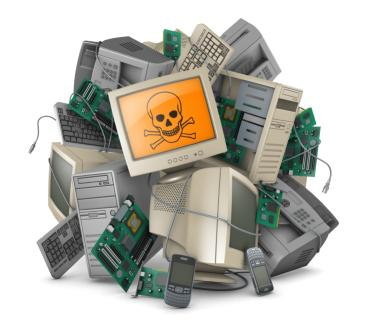Recycling Lives Services Things To Know Before You Buy
Recycling Lives Services Things To Know Before You Buy
Blog Article
Not known Factual Statements About Recycling Lives Services
Table of ContentsNot known Facts About Recycling Lives ServicesThe Ultimate Guide To Recycling Lives ServicesFacts About Recycling Lives Services UncoveredThe smart Trick of Recycling Lives Services That Nobody is DiscussingRumored Buzz on Recycling Lives Services

Additionally, all Oxfordshire local authorities approve vapes and e-cigarettes as a different kerbside collection. Disposable vapes be placed inside your wheelie containers. Exactly how they are accumulated in each area varies somewhat; examine you have the correct information for your location. Utilize the Waste Wizardsearch device to examine just how your neighborhood authority collects this waste or discover various other drop-off areas in your area.
Portable batteries the kind you discover in tiny handheld gadgets can additionally be reused at the kerbside but not inside any one of your bins. Check the Waste Wizard for just how to do this in your area. Larger shops that offer batteries likewise have collection factors for reusing old batteries. Batteries must constantly be removed from electrical items where they are designed to do so and recycle separately, Energy-saving, LED and compact fluorescent light bulbs and tubes can be recycled at our recycling centres.
6 Simple Techniques For Recycling Lives Services
Older-style filament or halogen light bulbs can be taken care of in your basic rubbish bin in the house. Some DIY shops additionally have collection points for light bulbs. Small electric products (little enough to suit a service provider bag) can be recycled at our waste recycling centres or at the kerbside. recycling lives services muck away.

Unknown Facts About Recycling Lives Services
Electrical products are broken down into different pasts to make sure that the various products they are comprised of can be removed and recycled. Waste reusing centres are for usage by homeowners only and can not accept waste from business resources. Tiny businesses and investors have a obligation of treatment under this plan, which implies they also have to follow the WEEE laws.
E-waste, electronic waste, e-scrap and end-of-life electronic devices are terms often made use of to explain used electronic devices that are nearing completion of their beneficial life, and are discarded, given away or offered to a recycler. The UN defines e-waste as any kind of disposed of products with a battery or plug, and includes hazardous and dangerous substances such as mercury, that can pose severe threat to human and environmental health.
The 20-Second Trick For Recycling Lives Services
Only 17.4% of this digital waste, having a blend of damaging substances and priceless materials, will be taped as being properly accumulated, treated and reused - https://z2fbznmf24y.typeform.com/to/kALmZ6RE. Several efforts are embarked on to tackle this growing problem, but none of them can be totally reliable without the active duty and correct education of consumers

Extracting thrown out electronic devices generates 80% less exhausts of carbon dioxide per system of gold contrasted with mining it from the ground. In 2015, the extraction of basic materials accounted for 7% of the globe's power usage. This indicates that relocating towards making use of even more secondary raw products in electronic goods can aid significantly within the targets laid out in the Paris Arrangement on climate change.
Recycling Lives Services for Beginners
Every tool ever generated has a carbon footprint and is adding to human-made international warming. Produce a tonne of laptops and possibly 10 tonnes of CO2 are emitted. When the carbon dioxide launched over a tool's lifetime is taken into consideration, it mainly takes place during manufacturing, before customers get a product. This makes reduced carbon processes and inputs at the manufacturing phase (such as usage recycled raw materials) and item lifetime essential determinants of general ecological influence.
Even in the EU, which leads the world in e-waste recycling, simply 35% of e-waste is formally reported as correctly gathered and recycled. Globally, the standard is 20%; the remaining 80% is undocumented, with much finishing up hidden under the ground for centuries as land fill. E-waste is not naturally degradable. The absence of reusing taxes the global digital industry and as tools end up being a lot more countless, smaller sized and much more intricate, the concern intensifies.
The continuing to be mass of e-waste primarily plastics laced with steels and chemicals positions a more intractable issue. A brand-new vision for the manufacturing and intake of electronic and electrical products is required. It is easy for e-waste to be framed as a post-consumer problem, yet the concern includes the lifecycle of the tools everyone makes use of.
Report this page